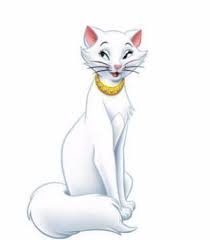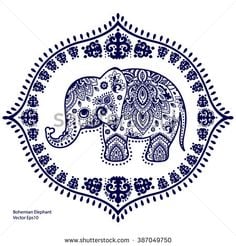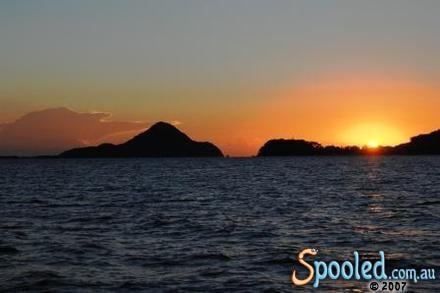

Gland you have enjoyed your visit Incognito!
You may like to add to the Thread with a lovely photo of countryside that is relaxing.

Spain




Beautiful close up of the poppies.

Thank you RnR yes they are lovely; just outside the village in Yorkshire where we lived for three years were two fields and each spring they were a sight to behold full of poppies.

BLUEBELLS & FIELDS OF GOLD
We are so lucky to live by the sea but also to have the beautiful South Downs surrounding us too … and obviously in Spring it is in its most colourful state and a joy to visit for long walks and an explore!

 Dependent on the weather, but usually through April and the first week of May, the stunning Bluebell Walk is open to the public at Arlington in Sussex, UK … these amazing forests stretch over 3 working farms and are carpeted with beautiful bluebells!
Dependent on the weather, but usually through April and the first week of May, the stunning Bluebell Walk is open to the public at Arlington in Sussex, UK … these amazing forests stretch over 3 working farms and are carpeted with beautiful bluebells!

 The South Downs, UK, has miles upon miles of breathtaking landscapes, rolling hills, picturesque villages and ancient woodland all protected by its National Park status – so much to explore and be in awe of – nature at its very best! And the fields upon fields of fluorescent Rapeseed in full bloom are nothing short of spectacular!
The South Downs, UK, has miles upon miles of breathtaking landscapes, rolling hills, picturesque villages and ancient woodland all protected by its National Park status – so much to explore and be in awe of – nature at its very best! And the fields upon fields of fluorescent Rapeseed in full bloom are nothing short of spectacular!

 The scent that rose up from the bluebell carpet, as you walked along the paths through them, was delicate, sweet and astounding! A magical walk and experience that we will be looking forward to doing again next year!
The scent that rose up from the bluebell carpet, as you walked along the paths through them, was delicate, sweet and astounding! A magical walk and experience that we will be looking forward to doing again next year!






I can just imagine myself walking through these Blue Bells and woods with the heady scent of the flowers, how relaxing.



I especially love this scene with the Blue Bells and mother sheep with her two babies.

Buckinghamshire UK


Celia - I remember in Art school we were told the old saying, "Blue and Green should never be seen unless there's a colour in between", but when Mother Nature decides to put on a show, all colours match.

LOL I remember that too Hola, so I went out and bought myself a dress in green and blue! LOL
I really loved that dress, I was not so keen on orange and red which were the fashion with a bit of yellow in the 60s. It was called flower power and minis too.

https://www.ecu.edu.au/features/ecu-life/aboriginal-seasons-guided-by-the-land
Aboriginal seasons guided by the land
Unlike the European calendar, there are six Nyoongar seasons in Western Australia’s South West region, which are indicated by changes in local plants and animals. Learn how to pick the change of seasons with this handy guide.
Traditionally Nyoongar people hunted and gathered food according to the seasons, being guided by the signs in nature as to which animal and plant resources were plentiful at those times.
ECU Cultural Awareness Officer Jason Barrow explains the traditions and environmental indicators in the South West region of Western Australia for each of the Nyoongar seasons.
 The Australian Christmas Tree is flowering during Birak season.Birak (December - January)
The Australian Christmas Tree is flowering during Birak season.Birak (December - January)During Birak season the rain eases and the warm weather really starts to take hold. The afternoons are cooled by the sea breezes from the south west.
Traditionally this was the fire season. An almost clockwork style of easterly winds in the morning and sea breezes in the afternoon meant that this was burning time of the year for Nyoongar people and they would burn the country in mosaic patterns.
There are several reasons for this, including fuel reduction, increasing the grazing pastures for animals, to aid seed germination and to make it easier to move across the country.
There are many fledglings venturing out of nests in Birak, though some are still staying close to their parents such as magpies and parrots. Reptiles will also be shedding their old skin for a new one.
With the rising temperatures and the decreasing rainfall, it's also a time for the baby frogs to complete their transformation into adulthood.
 The eucalyptus tree flowers during Bunuru season.Bunuru (February - March)
The eucalyptus tree flowers during Bunuru season.Bunuru (February - March)Bunuru is the hottest time of the year with little to no rain. Hot easterly winds continue with a cooling sea breeze most afternoons – if you're close to the coast.
Traditionally this was, and still is, a great time for living and fishing by the coast, rivers and estuaries. Because of this, freshwater foods and seafood made up major parts of the Nyoongar people’s diet during Bunuru.
Bunuru is also a time of the white flowers with lots of white flowering gums in full bloom, including jarrah, marri and ghost gums.
Another striking flower to look out for is the female zamia (Macrozamia riedlei). Being much larger than its male counterpart, the huge cones emerge from the centre of the plant with masses of a cotton wool like substance.
As the hot and dry weather continues, the seed cones change from green to bright red, indicating they're ripening and becoming more attractive to animals, particularly the emu, that will eat the toxic fleshy outer layer.
 Banksias start to display their flowers during Djeran season ensuring nectar food sources for the small mammals and birds.Djeran (April – May)
Banksias start to display their flowers during Djeran season ensuring nectar food sources for the small mammals and birds.Djeran (April – May)Djeran season sees a break in the really hot weather. A key indicator of the change of season is the cool nights that bring a dewy presence in the early mornings.
The winds will also change, especially in their intensity, with light breezes generally swinging from southerly directions. Many flying ants can be seen cruising around in the light winds.
Djeran is a time of red flowers, especially from the red flowering gum (Corymbiaficifolia), as well as the smaller and more petite flowers of the summer flame (Beaufortia aestiva).
As you travel around the Perth area, you may also notice the red 'rust' and seed cones forming on the male and female sheoaks (Allocasuarina fraseriana).
Banksias start to display their flowers, ensuring that there are nectar food sources for the many small mammals and birds that rely upon them.
Traditionally, foods at this time of year included the zamia seeds that had been collected and stored for treatment during the previous season.
The root bulbs of the yanget (Bullrushes), fresh water fish, frogs and turtles were also common foods.
As the season progresses, the nights will become cooler and damp. The onset of cool and rainy days meant that traditional mia mias (houses or shelters) were repaired and updated to make sure they were waterproofed and facing in the right direction in readiness for the deep wintery months to come.
 Look out for the blues and purples of the blueberry lily (Dianella revolta) and the purple flags (Patersonia occidentalis) during Makuru season.Makuru (June - July)
Look out for the blues and purples of the blueberry lily (Dianella revolta) and the purple flags (Patersonia occidentalis) during Makuru season.Makuru (June - July)Makuru sees the coldest and wettest time of the year in the South West. Traditionally, this was a good time of the year to move back inland from the coast as the winds turned to the west and south bringing the cold weather, rains and occasionally snow on the peaks of the Stirling and Porongurup Ranges.
As the waterways and catchments started to fill, people were able to move about their country with ease and their food sources changed from the sea, estuarine and lake foods to those of the land, in particular the grazing animals such as the kangaroo.
As well as a food source, animals provided people with many other things. For example, the 'yongar' or kangaroo, not only provided meat but also 'bookas' (animal skin cloaks that were used as the nights became much cooler). Nothing was left. Even the bones and sinews were used in the manufacturing of bookas and for affixing barbs to hunting tools such as spears.
Makuru is also a time for a lot of animals to be pairing up in preparation for breeding in the coming season. If you look carefully, you might see pairs of 'wardongs' (ravens) flying together.
Upon the lakes and rivers of the South West, you'll also start to see a large influx of the Black Swan or 'Mali' as they too prepare to nest and breed.
Flowers that will start to emerge include the blues and purples of the blueberry lily (Dianella revoluta) and the purple flags (Patersonia occidentalis).
As the season comes to a close, you should also start to notice the white flowers of the weeping peppermint (Agonis flexuosa) as the blues start to make way for the white and cream flowers of Djilba.
 The yellow flowering acacias kick off the abundance of plants flowering during Djilba.Djilba (August - September)
The yellow flowering acacias kick off the abundance of plants flowering during Djilba.Djilba (August - September)This is the start of the massive flowering explosion that happens in the South West. Beginning with the yellow flowering plants such as the acacias.
Djilba is a transitional time of the year, with some very cold and clear days combining with warmer, rainy and windy days mixing with the occasional sunny day or two.
Traditionally, the main food sources included many of the land-based grazing animals including the yongar (kangaroo), the waitj (emu) and the koomal (possum).
As the days start to warm up, we start to see and hear the first of the newborns with their proud parents out and about providing them with food, guiding them through foraging tasks and protecting their family units from much bigger animals, including people!
The woodland birds are still nest bound, hence the swooping protective behaviour of the koolbardi (magpie),djidi djidi (willy wag tails) and chuck-a-luck (wattle birds).
As the season progresses and the temperatures continue to rise, the flower stalks of the balgas (Grass Trees) emerge in preparation for the coming Kambarang season.
 The balga trees continue to flower during Kambarang season.Kambarang (October - November)
The balga trees continue to flower during Kambarang season.Kambarang (October - November)During Kambarang season, we see an abundance of colours and flowers exploding all around us.
The yellows of many of the acacias continue to abound, along with some of the banksias and many other smaller delicate flowering plants including the kangaroo paw and orchids.
During this time the balga swill continue to flower, especially if they've been burnt in the past year or closely shaved.
One of the most striking displays of flowers to be seen during this season will be the moojar, or Australian Christmas Tree (Nuytsia floribunda). The bright orange-yellow flowers serve to signal the heat is on its way.
October is also the most likely time of the year that you'll encounter a snake as the reptiles start to awaken from their hibernation and look to make the most of the warm to assist them in getting enough energy to look for food.
It's also a time that many young families of birds will be singing out for their parents to feed them. Koolbardies (magpies) will be out protecting their nests and their babies.
Many things are undergoing transformation with the warm change in the weather and longer dry periods accompany a definite warming trend.
To experience the six Nyoongar seasons for yourself, check out the wide range of degrees available at ECU on our Future students webpages.

The Australian Christmas tree's are lovely.

Those are very beautiful -- the Aboriginal Xmas trees are so different from the ones we have here --



What a lovely picture, I've never seen so many ducklings.

I counted 16 gorgeous balls fo fluff.





Vietnam





Just found this thread, what a great idea to share the beauty of this planet (what is left and not destroyed), really loved the new growth after the bush fires, a real sense of hope and regeneration.
Thanks everyone.